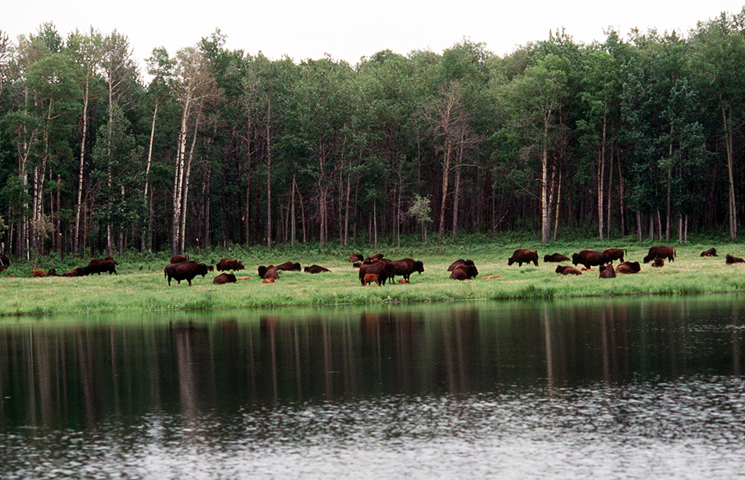Elk Island National Park is a protected area in central Alberta, Canada. It lies about 22 miles (35 kilometers) east of the city of Edmonton. The park, which is not actually an island, covers 47,900 acres (19,400 hectares) of hilly terrain. At the time it was created, the park protected the last remaining elk herds in the area, making it an “island” of elk. It is entirely fenced off from the surrounding farmlands, industrial areas, and towns. Visitors to the park may enjoy such activities as bird watching, camping, canoeing, hiking, kayaking, sailing, and skiing.

Elk Island National Park is in the region of Alberta known as the Beaver Hills. This area is characterized by groves of quaking aspen trees—named for the way their leaves tremble in the breeze—surrounded by grasslands. Other trees growing in the park include balsam poplar, black and white spruce, tamarack, and white birch. Park meadowlands contain such plants as horsetails, marigolds, orchids, and willows. The park has a number of lakes, including Astotin, Flying Shot, Oster, Little Tawayik, and Tawayyik.
Canada’s largest herd of plains bison roams freely in Elk Island National Park. Other animals that inhabit the park include beavers, coyotes, elk, moose, porcupines, white-tailed deer, and wood bison. Owls, trumpeter swans, and woodpeckers are just a few of the more than 250 species of birds that live in the park.
The government of Canada established Elk Park, a wildlife sanctuary for large game animals, in 1906. In 1913, the sanctuary was designated a dominion park of Canada. Following the passage of the National Parks Act in 1930, the area became Elk Island National Park.
